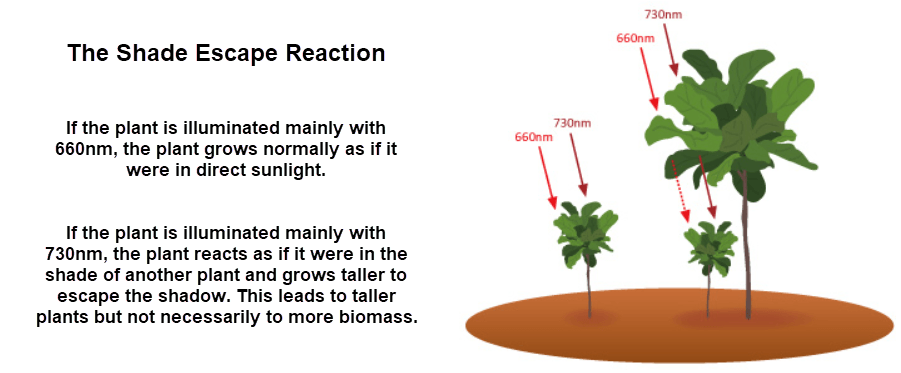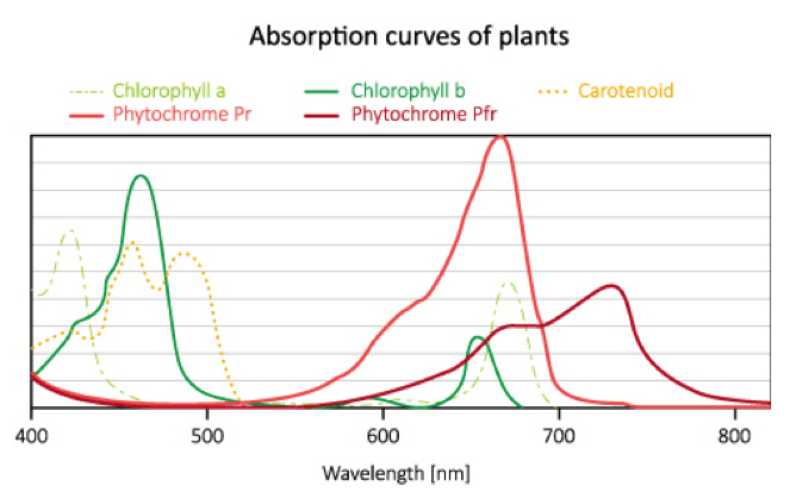Plant Pigments & Chlorophyll Absorption
Plant Pigments and Chlorophyll Absorption
Plants contain pigments (Chlorophyll A, Chlorophyll B, and Carotenoids) which absorb light to make sugar or food for the plant in the process called photosynthesis. The chlorophyll absorbs red and blue light and reflects green.
Chlorophyll A is the primary photosynthetic pigment. It absorbs most energy from wavelengths of violet-blue and orange-red light. It also reflects green-yellow light, and as such contributes to the observed green color of most plants.
Chlorophyll B helps in photosynthesis by absorbing light energy as the secondary pigment and passes it on to chlorophyll A. Its color is green, and it primarily absorbs blue light.
Carotenoids Any of a class of mainly yellow, orange, or red organic pigments, including carotene, which give color to plant parts such as ripe tomatoes and autumn leaves. Some studies suggest that diets high in carotenoid-rich fruit and vegetables are associated with reduced risks of cardiovascular disease and some cancers.

Phytochrome is a blue-green plant pigment which regulates plant development, including seed germination, stem growth, leaf expansion, pigment synthesis, and flowering. Phytochrome exists in two interconvertible forms. Pr is a blue form that absorbs red light (600nm) and Pfr is a blue-green form that absorbs far-red light (730 nm)

MENU
GET IN TOUCH
Energy Management Solutions | All Rights Reserved |
Created by Olive + Ash.
Managed by Olive Street Design.






